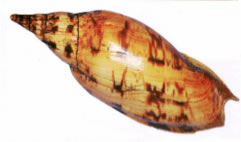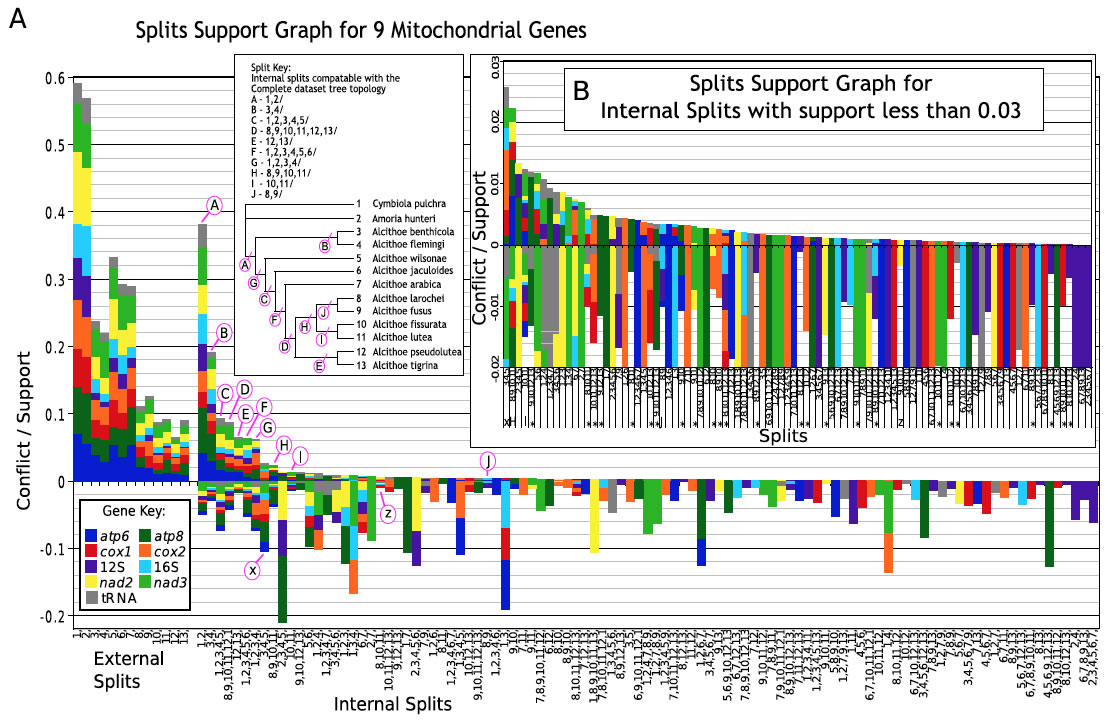I have a broad interest in evolutionary biology, but my main focus is the evolution of New Zealand marine snails. In particular my research involves the integration of molecular systematics, palaeontology and ecology to investigate rates and patterns of evolution.
My doctoral thesis looked specifically at the genus Alcithoe (Volutidae), and examined rates and patterns of the evolution of this genus inferred from molecular and paleontological data. This work involved analysis of phylogenetic signal in several mitochondrial genes, an integration of fossil record sampling data into molecular-clock calibrations of the Alcithoe phyogeny and a comparison of the divergence times and diversification patterns inferred in the molecular dataset versus parallel fossil record data. Research that has followed on from my thesis concerns attempts to resolve the discrepancy observed between molecular and morphological based phylogenies of the Alcithoe.
Between finishing my thesis and starting my TTP fellowship I was involved with projects that utilised next generation DNA sequencing. During this time I was able to develop skills in project design and data analysis for high-throughput sequencing studies, which I am now applying to my current projects.
For my Te Tipu Putaiao postdoctoral fellowship I am collaborating with my iwi, Ngati Porou, to investigate the molluscan biodiversity along the east coast of New Zealand, with a specific focus on the East Cape area. Ultimately the data generated for this project will be provided to the iwi to help inform decisions regarding the management of coastal resources.
Some of the aims of the project include:
- to reveal the pattern of population connectivity in key mollusc species around the East Cape
- to examine the community structure of molluscs in specific habitat types and determine their utility as environmental markers
- to infer how the current East Cape mollusc community was assembled through time and model how it might change as the climate warms.
During the course of this research I have developed an interest in the phylogeny and community ecology of the New Zealand micromollusc fauna. Current anlayses are using geometric and multilocus genetic data to explore patterns of speciation in marine gastropods.
|


|
Publications:
Hills SFK, Crampton JS, Trewick SA, Morgan-Richards M. (2012). DNA and morphology unite two species and 10 million year old fossils. PLoS Biology, in press.
Hills SFK, Trewick SA, Morgan-Richards M. (2011). Phylogenetic information of genes, illustrated with mitochondrial data from a genus of gastropod molluscs. Biological Journal of the Linnean Society 104, 4:770-785 DOI: 10.1111/j.1095-8312.2011.01756.x

Hills, SFK, Stevens MI, and Gemmill CEC. (2010) Molecular support for Pleistocene persistence of the continental Antarctic moss Bryum argenteum. Antarctic Science 22:721-726.
DOI: 10.1017/S0954102010000453
McComish BJ, Hills SFK, Biggs PJ, and Penny D. 2010. Index-free de novo assembly and deconvolution of mixed mitochondrial genomes. Genome Biology and Evolution 2:410-424.
DOI: 10.1093/gbe/evq029
Stevens MI, Hunger SA, Hills SFK, and Gemmill CEC. 2007. Phantom hitch-hikers mislead estimates of genetic variation in Antarctic mosses. Plant Systematics and Evolution 263:191-201.
DOI: 10.1007/s00606-006-0484-z
White WT, Hills SF, Gaddam R, Holland BR, and Penny D. 2007. Treeness triangles: Visualizing the loss of phylogenetic signal. Molecular Biology and Evolution 24:2029-2039.
DOI: 10.1093/molbev/msm139
Selected Conference Presentations:
Hills SF, Crampton JS (2012). Marrying Molecules and Morphology in Marine Molluscs.The 16th Annual New Zealand Phylogenetics Meeting,
Kaikoura, New Zealand
Hills SF (2011). Population, Species and Community Evolution in Molluscs on the East Coast of New Zealand: Where did they come from and where are they going? 14th Annual New Zealand Molecular Ecology Conference, Akitio, New Zealand
Hills SFK, Morgan-Richards M, Trewick S, Crampton J (2009). Enhancing molecular analysis with rigorous paleontological sampling probabilities. New Zealand Geology and Genes meeting, Christchurch, New Zealand
Hills, S. F. (2006). Rates and Modes of Evolution in New Zealand Gastropods. Molluscs 2006. University of Wollongong, NSW, Australia.
Hills, S. F. K., Trewick, S., & Morgan-Richards, M. (2010). Calibrating molecular trees with an excellent fossil record. Evolution 2010.Portland State University, Oregon, USA.
Hills, S. F., Crampton, J. S., Trewick, S. A., & Morgan-Richards, M. (2011). Old Shell, New Snail: Correspondence Between Fossil and Extant Species. 15th Evolutionary Biology Meeting at Marseilles.
Marseilles, France.
Hills, S. F. (2010). Can uneven extinction lead to basal branch contraction in molecular clock analysis? The 14th Annual New Zealand Phylogenetics Meeting. Whakapapa Village, New Zealand
Hills SF (2007) Fossils, morphology and genetics: evolution in a group of marine molluscs. Evolution 2007. Christchurch, New Zealand
General Media
Biotechniques DVD (2009) – An informative DVD resource for New Zealand High School Biology students showcasing standard molecular laboratory techniques through animation, demonstration and discussion.
|
|